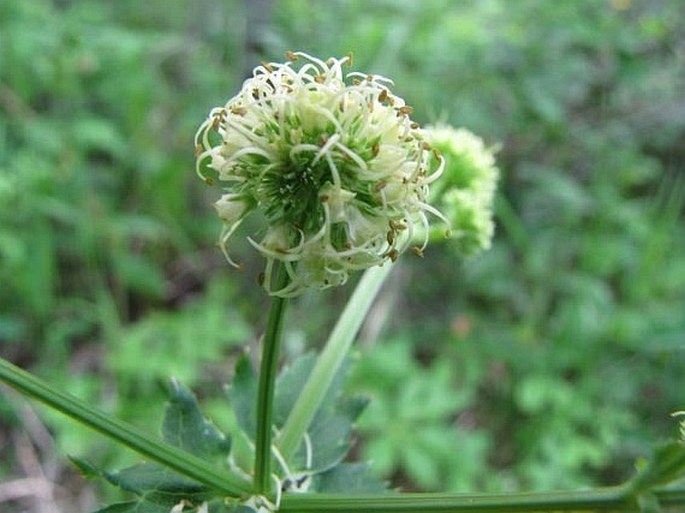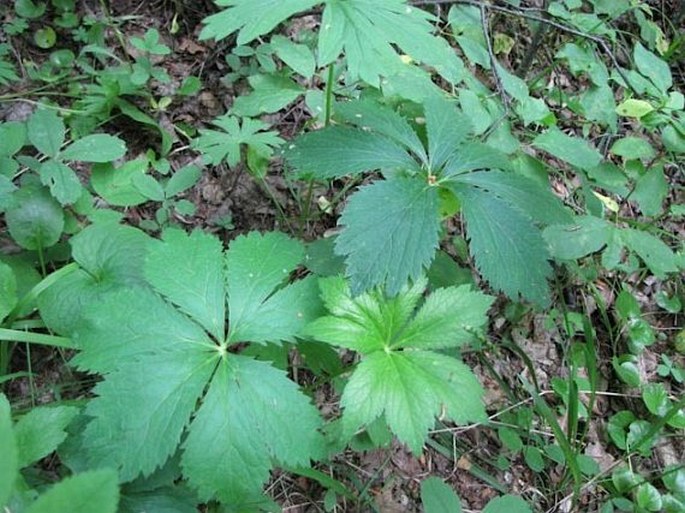Syn.: Sanicula canadensis var. marilandica (L.) Hitchc.
Family: Apiaceae Lindl.

Distribution: North America – southern part of Canada, northern and eastern part of USA, from Newfoundland to British Columbia, from Alberta to northern Florida and New Mexico.
Ecology: Moist, wooded areas and rocky slopes. Blooms in June and July.
Description: Perennial herb from fibrous roots, stems 30–60 cm tall, erect, hairless. Basal leaves 4–20 cm long, long stalked, palmately compound with 5–7 leaflets, leaflets oblong to lance shaped, 5–8 cm long, 1–2 cm wide, margins coarsely toothed; stem leaves alternate, stalkless. Flower cluster is terminal umbel, 6–15 cm across, compound with 1–5 rays; smaller umbels 12–25 flowered. Flowers are greenish white, 1–2 mm across; sepals 5, small; petals 5; stamens 5; pistil 1. Fruit is a schizocarp about 6 mm long, covered with hooked bristles, breaking into 2 single-seeded segments at maturity.
Usage: Native people used Snakeroot to treat kidney ailments, rheumatism and skin disorders. A poultice made from the root was used as a treatment for snakebites, hence the common name.




These images were taken in Canada, Alberta, Calgary, Weaselhead (Karel Bergmann, July 2012) and Canada, British Columbia, Vancouver Island, Goldstream Provincial Park (Vít Grulich, 8. 7. 2007).


